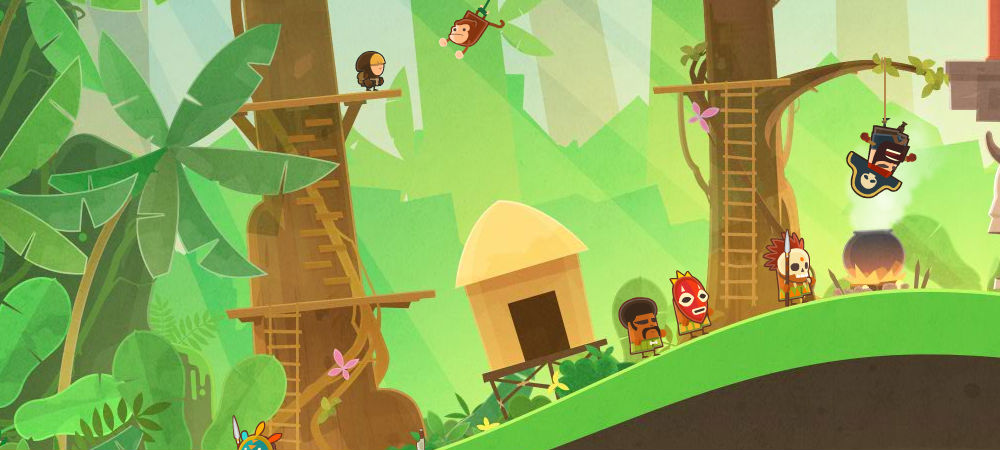Old and new-school adventuring
The mobile market never ceases to surprise me. Amidst a sea of heavy in-app-purchase exploitation, pay-to-win games, and clones, there are still a large number of modern classics that brave the choppy waters and come out on top.
Tiny Thief is the latest example of this triumph. It knows its roots, it looks unique, and it executes the touch-screen setup flawlessly. It’s also extremely adorable.

Tiny Thief (Android, iPad [tested on an iPad Mini], iPhone [reviewed on an iPhone 5])
Developer: 5 Ants Games
Publisher: Rovio Stars
Released: July 11, 2013 (Android, iOS)
MSRP: $2.99
Tiny Thief is part point-and-click adventure, part stealth action — in other words, an adventure game mixed with minor bouts akin to Metal Gear Solid. You play the part of the Robin Hood-esque Thief, who makes it his business to meddle in the affairs of the locals — usually for the greater good — with a small penchant for mischief.
The way you conduct your trade is extremely simple: you touch an area to move there, touch an object to interact with it, and that’s it. You’ll use this simple control scheme to hide in barrels and slip past guards, grab and combine objects, and climb up ladders and slink about rooftops.
You can’t tap multiple zones in sequential order to quickly queue actions, but as a result you almost never move accidentally. For instance, say you’re hiding a barrel. In most games, if you touch anywhere on the screen, you’d exit the barrel and go wherever you tapped, potentially blowing your cover — but in Tiny Thief, you have to touch the button above the barrel indicating that you want to specifically pop out of it.
It’s a very small nuance, but it makes a big difference, as you’ll never blame the precise touch -screen controls for blowing stealth or tapping the wrong area. I tested the game out on both an iPad Mini and an iPhone 5, and although the iPad has more screen real estate and perfectly fits each puzzle in the viewing area, the aforementioned control system prevents mistakes on the smaller iPhone screen.

Each level has three objectives — find the objects (which are usually unmarked, plentiful, and secret), find your ferret companion (a mini “Where’s Waldo?” of sorts), and complete the main objective, which clears the level. Not every objective is explicitly cleared the same way, as certain areas, when tapped, open up to reveal a hidden gem, or the ferret — so while a lot of the puzzles are fairly straightforward, you absolutely have to think outside the box to 100% the game.
Like other Rovio titles, the difficulty is as casual or hardcore as you want it to be, as simply beating a level will earn you one star, and finding everything else will earn you three. If you get stuck, there’s a clever hint system with visual clues that allows you to spoil each solution step by step, so you can work at your own pace without frustration.
The adventure bits take inspiration from one of my favorite (and underrated) point-and-click franchises of all time: Gobliins. Objects and interactions employ what I like to call the “Gobliins” style of facilitation — there’s not much dialog, and there’s a heavy emphasis on physical comedy/slapstick.
As a result, you’re not only engaging in ingenious puzzles, but you’re getting a laugh or two along the way. It helps that Tiny Thief has adorable visuals and unique character designs that really make the title feel like it takes place in its own world. They could stand to be a little sharper and more pronounced graphically, but I love the style regardless, and want to see more of it.

There are currently six “adventures” consisting five quests each to tackle, which range from a few minutes to brain-benders that will take you much longer to mull about in. The really cool thing about each adventure is that they tenuously link together to weave one large tale.
Tiny comics help facilitate the story, which take no more than a few seconds to read, putting you back into the action instantly. Knowing how Rovio operates, there are probably going to be a heap of free updates on the way, followed by a potential $0.99 expansion or two. There are no IAP at the time of this writing, which is refreshing.
The only real fault of Tiny Thief is that I wish there was more of it. I was glued to my screen, ready to see what the next area would be, and laughing all the way at the game’s effortless charm. If you’re a fan of adventure games, this is a no-brainer — just don’t be surprised if you spend an entire afternoon tearing through it, longing for more.





Published: Jul 23, 2013 02:00 pm